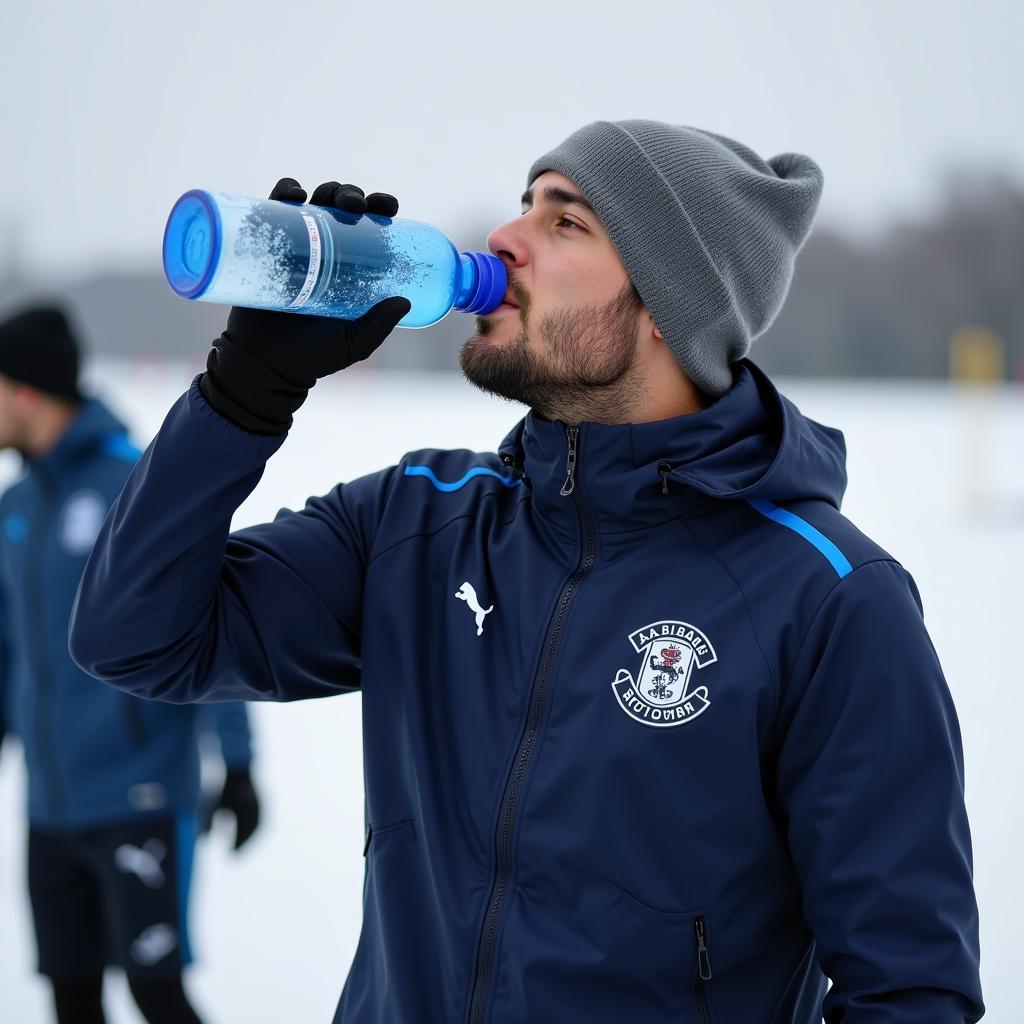Football Players in Winter: Mastering the Cold
November 5, 2024Football in winter presents unique challenges. From frozen pitches to biting winds, players must adapt to maintain their performance and avoid injury. This article explores how players navigate the winter months, covering everything from training adjustments to specialized gear. It’s all about staying on top of your game when the temperature drops.
As a striker, I know firsthand the difficulties of playing in winter. The cold can affect everything from ball control to muscle flexibility. That’s why it’s crucial to prepare properly and understand how to mitigate the impact of winter conditions. Whether you’re a professional or an amateur, this guide offers valuable insights to help you conquer the cold and excel on the pitch. You can even find tips similar to how we prepare at Real mua cầu thủ.
Training Adaptations for Winter Football
Winter training requires a shift in focus. Maintaining core body temperature becomes paramount, so warm-ups are even more crucial. Dynamic stretches and light cardio exercises help prepare muscles for the strain of playing in the cold.
Strength and Conditioning in the Cold
Strength training continues to be important during winter, helping to maintain muscle mass and power. However, it’s essential to listen to your body and avoid overexertion in cold temperatures, which can increase the risk of injury.
Consistent training, even in the cold, is key. Check out how some clubs approach winter training, like Barcelo có bao nhiêu cầu thủ, to get an idea of the professional approach.
Essential Gear for Winter Football
The right gear can make all the difference in winter. Thermal base layers are essential for maintaining body heat, while gloves and hats protect extremities from the cold. Choosing appropriate footwear is also crucial. Boots with good grip are vital for navigating slippery surfaces.
Choosing the Right Winter Football Boots
Winter boots often feature longer studs or specialized sole plates for enhanced traction on frozen or wet ground. This helps prevent slipping and ensures stability during quick movements.
Staying Hydrated in Cold Weather
While it might seem counterintuitive, hydration remains crucial during winter. Cold air can be dry, and players can lose fluids through breathing and sweating, even in low temperatures. Regular fluid intake is essential for optimal performance.
Why Hydration Matters in Winter Football
Proper hydration helps regulate body temperature and prevent muscle cramps, which are more common in cold weather. It also supports overall physical function and aids in recovery after training or matches.
Remember, staying hydrated is always important, no matter the season.
 Football Player Hydrating in Winter
Football Player Hydrating in Winter
Conclusion: Dominating the Winter Pitch
Winter football presents its challenges, but with the right preparation and mindset, players can thrive even in the coldest conditions. By adapting training routines, investing in appropriate gear, and prioritizing hydration, you can stay at the top of your game throughout the winter months. Don’t let the cold hold you back – conquer the winter pitch and continue to improve your skills. Mastering the cold is key to becoming a complete football player in winter.
FAQ
- What type of base layers are best for winter football?
- How often should I clean my winter football boots?
- Can I wear regular running shoes for winter football training?
- What are some good warm-up exercises for cold weather?
- How can I prevent muscle cramps during winter training?
- What should I eat before a winter football match?
- How can I stay motivated to train during the cold winter months?
For further assistance, please contact us: Phone: 0396443476, Email: [email protected] or visit our address: 23 Tháng 3, Đắk Nia, Gia Nghĩa, Đắk Nông, Vietnam. We have a 24/7 customer service team.